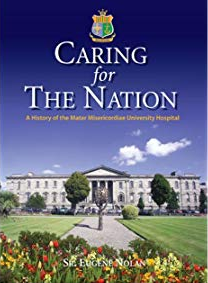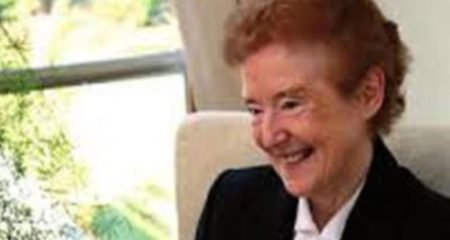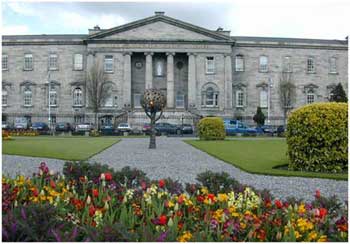For the past two months we have gone through many phases and many emotions. We have felt, disbelief that this virus is in our midst, fear and terror sometimes, and sorrow and pain at the deaths and suffering. We have been thankful for the great care and goodness we receive; we are in awe at the self-giving of so many. We have learned so much; we are proud to be Irish, our national self-confidence is being restored, we admire the professionalism of our leaders, we realise that our community spirit has never gone away. We see our church offering hope and prayer in a new way, we understand that all jobs are important and necessary, that each of us has a part to play and that we are all in this together.
 Sr. Eugene’s book
Sr. Eugene’s book
Recently I was looking through Sr. Eugene Nolan’s book, ‘Caring for the Nation,’ her history of the Mater Hospital in Dublin. As I skimmed to find what I wanted I became engrossed in her account of the epidemics which have happened down the years since the Mater first opened. I was intrigued at how healthcare has changed and developed. The Mater opened on 24 September 1861, Catherine McAuley’s dream, ‘a hospital of their own,’ for the care of the poor of Dublin, a city riven with poverty and disease, now beyond our comprehension. We cannot imagine the groundbreaking importance of this new hospital within walking distance of the largest tenement in Europe, with the highest death rate in all of Europe.
 Sr. Eugene Nolan
Sr. Eugene Nolan
The cholera outbreak in Dublin in 1832 had claimed the lives of 5,632 people. Hospitals were a place of shame, nobody wanted to be there, or have one built in their locality. The Famine 1845 – 1849 led to abysmal tenements. Sr. Cecilia Marmion who was spearheading the building of the new hospital died herself of typhus in 1849.
The outbreak of cholera August 1866 was the first significant challenge to the Mater Hospital. Hospitals were reluctant to admit its victims. The Mater did. A ‘cholera cart’ painted yellow, collected patients and took them to the hospitals. Patients would be left on hospital steps during the night. 143 cases died in the Mater at this time.
 Mater Hospital
Mater Hospital
In 1871 the city was smitten with smallpox, spreading like wild fire, causing enormous fear. If a family member had it, anyone in that family in employment immediately lost their job. Six to eight hundred patients were treated in the Mater with a high mortality rate of patients and staff. Over 2,000 people died in the city.
In 1886 there was another outbreak of cholera and a further outbreak of smallpox in 1894. Again the city was ravaged. The city council discussed building a special fever hospital for contagious diseases; this was opposed by the public.
Wave after wave of epidemics visited the city; ‘scarlatina,’ scarlet fever, came in 1896, largely involving children. On one day there was a total of 630 ‘notified cases.’ Then the silent epidemic, tuberculosis, swept Ireland with no treatment in the early days, until the use of streptomycin began to change things in the 1950s.
By 1895 when building a fever hospital close to the Mater did not prove acceptable, pressure was mounting to find convalescence beds so that patients could regain health and strength. So Beaumont Convalescent Home came into being with the convent being built some time later. The purchase of Beaumont House and the surrounding 120 acres became possible due to a bequest to the sisters of £7,000 and it was within easy reach of the Mater. It was owned by Edward O’Malley, who had bought it from Oscar Guinness in 1884. When he died the Sisters bought it. It was reconstructed into a convalescent home and opened on 26th April 1902, ready to accommodate 55 patients. It was managed and staffed by Sisters from Baggot St. with the Sisters living in a part of the home, and agreements drawn up between the Mater and the convalescent home.
This is a miniscule account of various epidemics down the years drawn from Sr. Eugene’s book. As she herself says, ‘The history of the Mater is almost endless.’ It opened my eyes to the fact that COVID-19 isn’t the first epidemic to seriously impact us. I learned, too, how far healthcare has progressed since 1861, and perhaps how fortunate we are to live in the twenty first century. Sr. Eugene’s book stands as testimony to the marvellous medical advances which have happened.
At this time may we all be blessed and safe and kind.
Mary Coyle rsm
South Central Province


